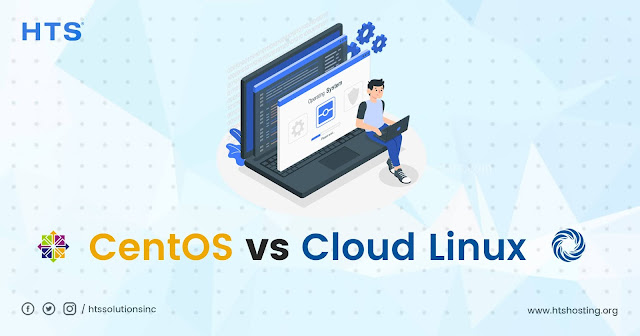In
order to understand the difference between Centos and Cloud Linux, one must be
aware of the key features of both. Let us dive into the definition and
differences between CentOS and Cloud Linux.
CentOS
CentOS,
also known as Community Enterprise Operating System, is a community-driven free
software that focuses on providing a robust open-source ecosystem.
Cloud
Linux
CloudLinux
Operating System is created for shared hosting providers. It partitions customers
into LVE (Lightweight Virtualized Environment) which divides, allocates, and
also limits the server resources.
While
being in a shared hosting environment, it is essential to make sure that no
single user overloads the systems with their applications. CloudLinux has been
designed to fight all web hosting issues.
Centos
vs Cloud Linux
Since
we have a slight brief of CentOS and Cloud Linux definition, let us get into
the differences between the two.
Easy
Use
The
important part of setting up the server is the maintenance. If the server is
poorly maintained, it is likely to be hacked frequently. CentOS has a plethora
of application updates as well you also get an option to automate the package
updates.
However,
in CloudLinux, it has its own packages. They offer a bunch of features to make
web hosting pretty easy.
Stability
Stability
is of utmost importance when it comes to Web Hosting servers. CentOS is
comparatively old in this industry and it is quite efficient in handling the
websites that demand high resource usage.
However,
CloudLinux servers have an option to limit the resources that are allocated to
a specific user. It is beneficial if there are multiple websites being hosted
on the same server.
Cost
The
cost is a major factor in any business. Therefore, before making an investment,
one must know what they are getting into. CentOS is free of cost. So, you don’t
need to invest a penny in installing CentOS.
But,
CloudLinux demands a license. However, you can get various discounts in order
to get licenses in a bulk.
Usage
Tracking
In
CentOS servers, you won’t have any in-built system for the purpose of user
resource usage tracking. You will have to install applications, such as monit,
psacct, etc for usage tracking of every website.
CloudLinux
tracks the resource usage for every user. Also, CloudLinux is able to cPanel
(domain management panel) to offer the users the exact brief graphs on their
application usage.
Security
In
CentOS, the security systems are pretty easy to install. The developers
constantly work on security updates to defend attackers and ensure a smooth
flow.
On
the other hand, Cloud Linux uses CageFS technology. In this technology, one
user is not allowed to view another user’s files. This is a beneficial service
as the hacking of one account won’t affect others.
Conclusion:
Choosing
between CentOS and CloudLinux is very much dependent on the purpose of the
server. Therefore, before picking the server, figure out the needs of the
business and take an action. If you need to host fewer websites, then CentOS is
good to go. But, for the purpose of shared hosting, Cloud
Linux is a better option.
Source: https://htshosting.org/blog/2021/05/centos-vs-cloud-linux/





No comments:
Post a Comment